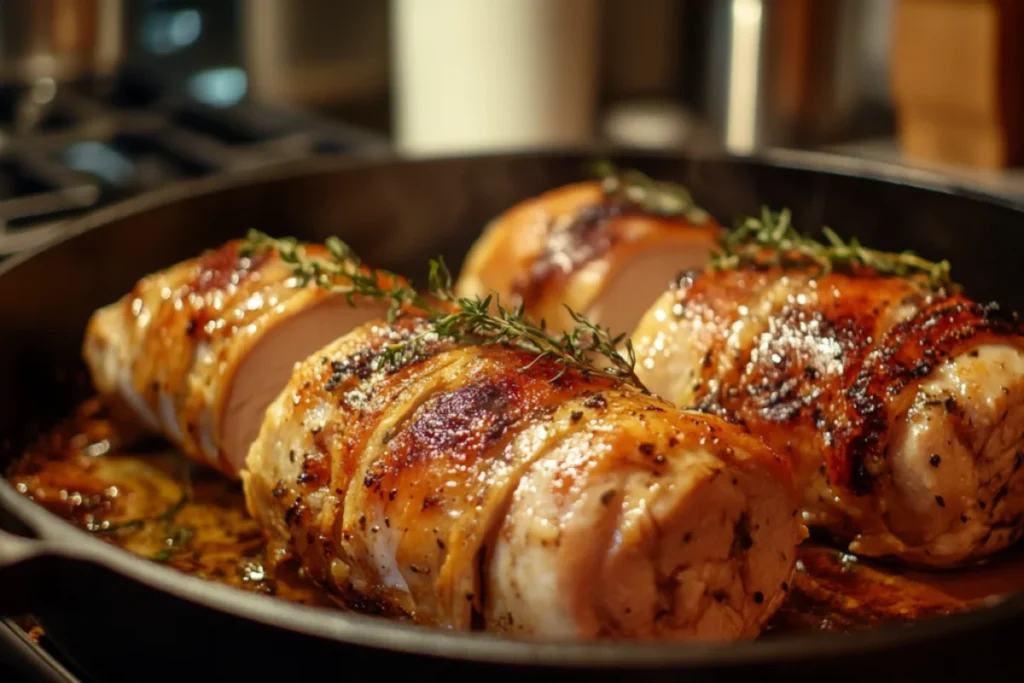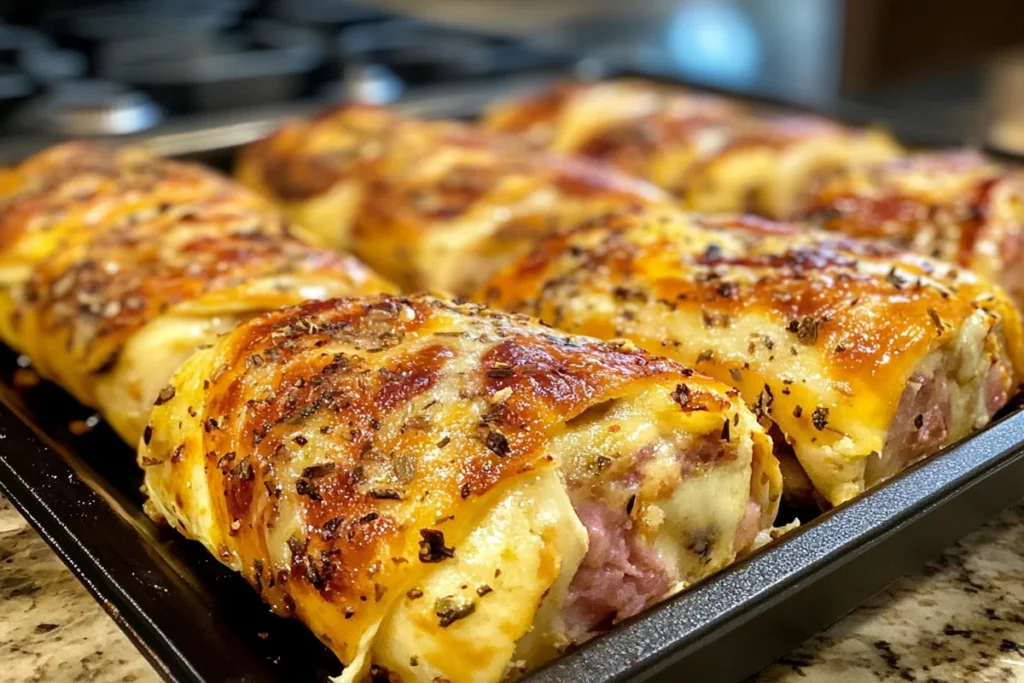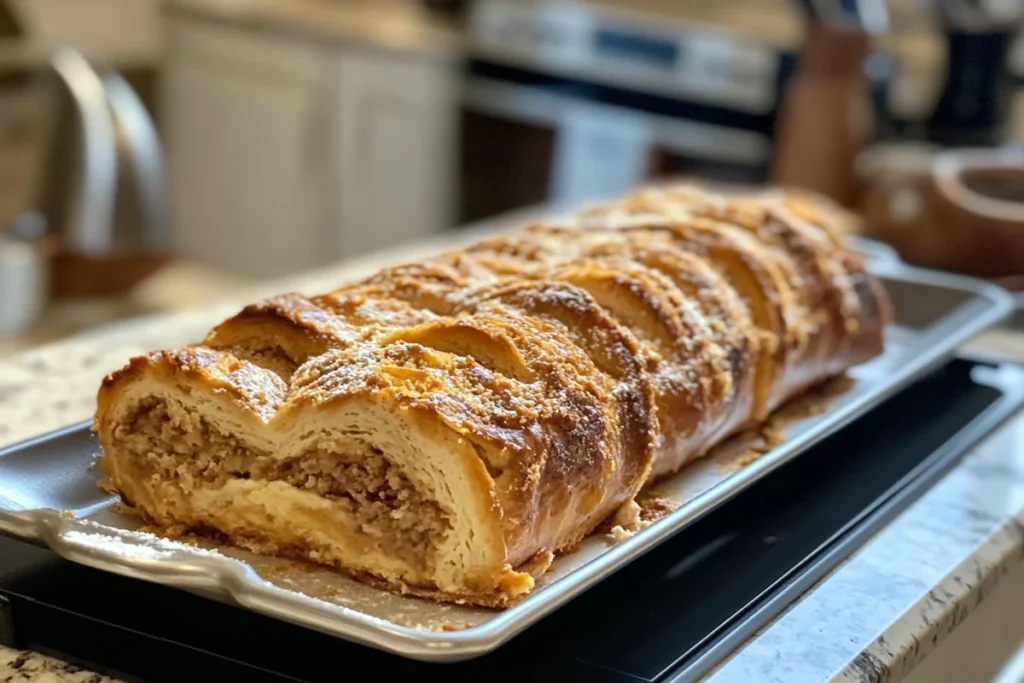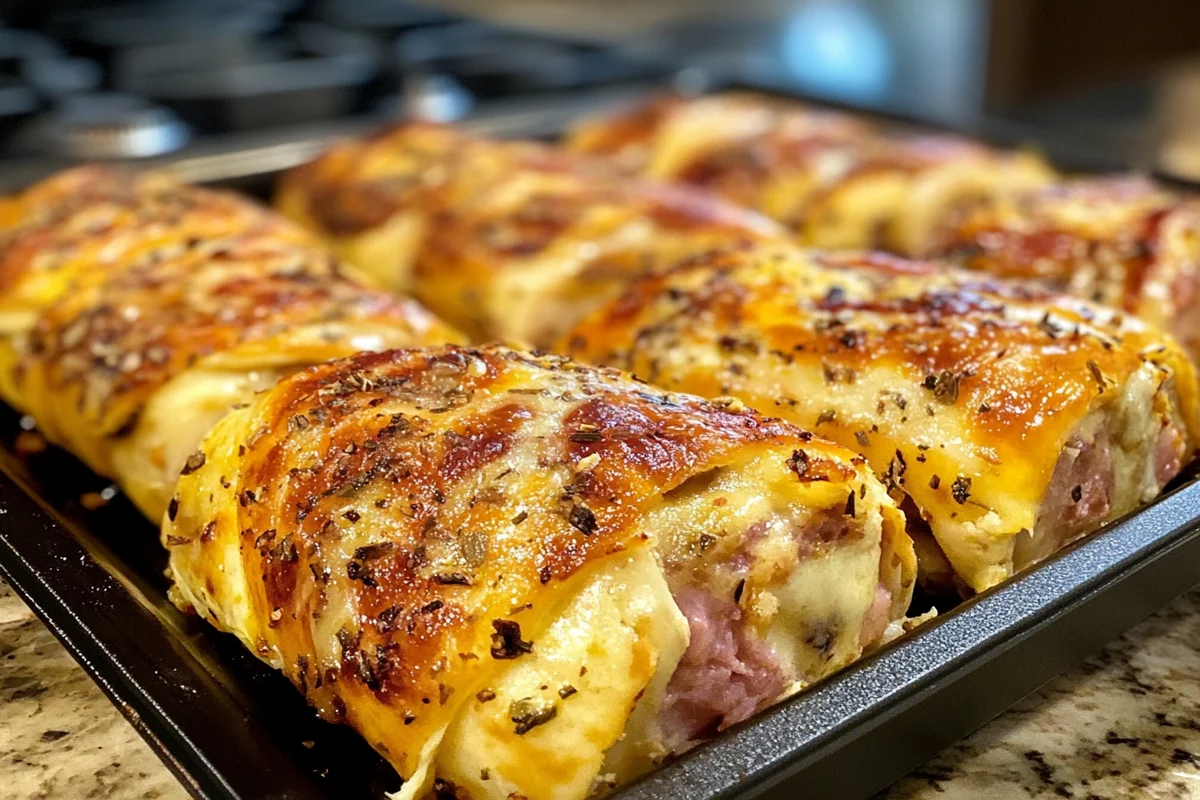
What is a Roulade in Cooking? A Comprehensive Guide with Tips and Techniques
Introduction
When it comes to cooking, some techniques not only showcase your culinary skills but also elevate your dishes to a new level of flavor and presentation. One such versatile and impressive method is the roulade. From savory to sweet, this rolled preparation adds charm to any table. Whether you’re making a delicate Swiss roll or a hearty meat-based roulade, this article will walk you through everything you need to know about the world of roulades.
Let’s dive into the details of what makes a roulade special, starting with its origin, types, and techniques!
Part 1: Understanding Roulade in Cooking
Definition of Roulade
A roulade is a dish made by rolling a flat base ingredient, such as meat, sponge cake, or vegetables, around a filling. The term “roulade” originates from the French word rouler, which means “to roll.” The key to its appeal lies in the combination of textures and flavors, neatly encased in an elegant spiral.
While often associated with European cuisine, the roulade’s versatility has inspired adaptations across the globe. From savory dishes packed with vegetables and herbs to decadent desserts oozing with cream, roulades cater to every palate.
Etymology and Origin
The roulade has a long history rooted in European culinary traditions. Its name reflects its French origins, but the concept of rolling ingredients predates its naming. Classic examples such as Rinderroulade from Germany and Involtini from Italy demonstrate how different cultures embraced this rolling technique to create unique flavors.
Notably, the Swiss roll, a popular dessert, owes its beginnings to 19th-century Europe. Though initially thought to have originated in Central Europe, it has become a global favorite under various names and interpretations.
Overview of Roulade Varieties
There are primarily two types of roulades: savory and sweet. Savory roulades often involve meats like beef or chicken, stuffed with herbs, cheese, or vegetables. Meanwhile, sweet roulades, such as the Swiss roll or Bûche de Noël, are sponge cakes rolled around rich fillings like cream or jam.
Each type offers a unique opportunity to showcase creativity and satisfy taste buds. Whether you’re preparing a hearty entrée or a show-stopping dessert, roulades let you experiment with endless combinations of ingredients.
Part 2: Types of Roulades
Exploring Different Types of Roulades
The roulade is a wonderfully adaptable dish, lending itself to various interpretations that range from hearty savory meals to delightful desserts. Let’s explore these types to see how they differ and what makes each unique.
Savory Roulades
Savory roulades are typically made with a base of meat, seafood, or even vegetables, rolled around flavorful fillings. These roulades are often served as a main course and can be cooked using methods like braising, baking, or frying.
Meat-Based Roulades
One of the most popular savory roulades uses thin slices of meat to create a roll filled with vegetables, herbs, or cheese.
Beef Roulade (Rinderroulade)
A classic example of a savory roulade is the German Rinderroulade. This dish consists of tender beef slices rolled around a mixture of onions, pickles, and mustard. It is then braised until the flavors meld beautifully.
Chicken Roulade
Chicken roulades are another favorite. Often stuffed with spinach, cream cheese, and sun-dried tomatoes, these rolls are not only delicious but also visually appealing when sliced.
Seafood Roulades
Seafood roulades bring a light, delicate touch to the roulade family. Commonly prepared with thin fillets of fish such as salmon or sole, they’re filled with herbs, a sprinkle of citrus, and perhaps some crab or shrimp for added flavor.
Vegetarian Roulades
Vegetarian roulades are an excellent alternative for plant-based enthusiasts. Zucchini, eggplant, or thin layers of potatoes are commonly used as the base, rolled with fillings like ricotta, spinach, and roasted vegetables. These options are just as hearty and satisfying as their meat counterparts.
Sweet Roulades
On the sweeter side, roulades shine as desserts, offering a perfect harmony of texture and sweetness.
Swiss Roll
The Swiss roll is arguably the most famous sweet roulade. This sponge cake is spread with jam or cream and then rolled into a delightful spiral. It’s a timeless classic enjoyed worldwide.
Bûche de Noël (Yule Log)
Cooks traditionally serve the Bûche de Noël, or Yule log, during Christmas. They make it with chocolate sponge cake, fill it with buttercream or ganache, and decorate it to resemble a log, complete with edible “bark.”
Roulades, whether savory or sweet, are as versatile as they are delicious. Each type carries its own charm, making it a centerpiece-worthy addition to any table.
Part 3: Preparing a Roulade
How to Prepare a Roulade
Creating a roulade may seem daunting at first, but with the right techniques and a touch of patience, you can master this impressive dish. The preparation process involves selecting your base and filling, rolling the components carefully, and cooking to perfection. Here’s how you can get started.
Selecting Ingredients
The success of a roulade begins with thoughtful ingredient selection. Whether you’re making a savory or sweet version, fresh and high-quality ingredients are essential.
Choosing the Base
For savory roulades, options include thin slices of beef, chicken, fish fillets, or even sturdy vegetables like zucchini. For sweet roulades, a sponge cake or thin pastry sheet provides a soft, flexible base that’s easy to roll.
Picking the Filling
The filling is where you can truly showcase creativity. For savory roulades, consider a mix of sautéed vegetables, cheese, or minced herbs. Sweet roulades pair beautifully with whipped cream, jams, ganache, or fruit compotes.
Techniques for Rolling
The art of rolling is at the heart of any roulade. A neat roll ensures even cooking and a stunning spiral when sliced.
- For Savory Roulades:
Lay the base flat and spread the filling evenly, leaving a small border around the edges. Starting at one end, gently roll the base while keeping the filling intact. Tying the roll with kitchen twine or securing it with toothpicks ensures it holds its shape during cooking. - For Sweet Roulades:
Once your sponge cake has baked and cooled slightly, transfer it onto a damp towel dusted with powdered sugar. Roll the cake gently with the towel to create the initial shape, then unroll, add the filling, and roll again.
Securing the Roulade
To prevent unraveling, it’s crucial to secure your roulade properly. For savory roulades, butcher’s twine works well. In the case of sweet roulades, firm yet gentle rolling is key, and sometimes a light dusting of powdered sugar acts as a seal.
Cooking Methods
The cooking method can drastically affect the flavor and texture of your roulade. Let’s explore some popular techniques.
Baking
Ideal for both savory and sweet roulades, baking ensures even cooking. A preheated oven and proper placement on a baking tray lined with parchment paper or foil prevent sticking.
Frying
Some savory roulades, like meat-based ones, benefit from frying. This creates a golden-brown crust that locks in juices before further cooking, often followed by braising.
Braising
This method is perfect for meat roulades. By slowly cooking the roulade in a flavorful liquid, the dish absorbs rich, deep flavors, resulting in tender, melt-in-your-mouth bites.
With these steps, you’re well on your way to crafting a roulade that’s as visually striking as it is delicious.
Part 4: Serving and Pairing

Serving Suggestions for Roulades
A beautifully prepared roulade deserves an equally stunning presentation. How you serve your roulade can enhance the dining experience, showcasing the dish’s intricate details and complementing its flavors. Let’s explore how to elevate your roulade from good to unforgettable.
Appropriate Side Dishes
Pairing your roulade with the right sides brings balance and variety to the plate.
- For Savory Roulades:
- Mashed or roasted potatoes are classic companions, soaking up the roulade’s juices.
- Steamed or sautéed vegetables, such as green beans, asparagus, or carrots, provide a vibrant, fresh contrast.
- A light, crisp salad can add a refreshing element to rich roulades.
- For Sweet Roulades:
- Fresh berries or fruit coulis complement the sweetness of a dessert roulade.
- A dollop of whipped cream or a scoop of vanilla ice cream adds a touch of indulgence.
Sauce Pairings
Sauces can take a roulade to the next level by adding moisture and depth of flavor.
- Savory Sauces:
- A rich gravy works wonders with beef or chicken roulades.
- Cream-based sauces, infused with garlic or herbs, pair excellently with chicken and seafood roulades.
- Sweet Sauces:
- A drizzle of chocolate ganache or caramel is perfect for a Swiss roll or Bûche de Noël.
- Berry or citrus sauces provide a tart counterpoint to sweet fillings.
Presentation Tips
The visual appeal of a roulade is one of its defining features, so presentation matters.
- Slicing: Use a sharp knife to cut clean slices, revealing the spiral of filling inside.
- Plating: Arrange slices slightly overlapping on a plate for a layered effect.
- Garnishing: Add herbs like parsley or thyme for savory roulades, or a dusting of powdered sugar and fresh fruit for sweet ones.
A well-plated roulade not only excites the eyes but also hints at the flavors awaiting every bite.
With thoughtful sides, sauces, and presentation, you can transform your roulade into a memorable culinary masterpiece that dazzles both the palate and the eyes.
Part 5: Cultural Significance and Variations

Cultural Significance of Roulades
The roulade is more than just a cooking technique; it is a reflection of culinary traditions that span the globe. Each culture brings its unique twist to this dish, adapting it to local tastes and ingredients while preserving its essence as a rolled delight.
Roulades in European Cuisine
Europe has long been a hub of roulade creativity. From hearty meat rolls to delicate desserts, the continent offers some of the most iconic interpretations.
French Paupiette
In France, the paupiette is a savory roulade featuring thin slices of meat filled with vegetables or forcemeat, often tied and cooked in a flavorful broth. This dish exemplifies the French approach to transforming simple ingredients into gourmet fare.
German Rinderroulade
The German Rinderroulade stands out as a quintessential comfort food. It often features beef rolled with pickles, mustard, onions, and bacon (or non-pork alternatives). Braised in a rich sauce, it’s a dish steeped in tradition, commonly served during festive occasions.
Roulades in Other Cuisines
Beyond Europe, roulades appear in various forms across the culinary world, showcasing remarkable versatility and adaptation.
Italian Involtini
In Italy, involtini are small rolled meat dishes, often filled with ingredients like cheese, prosciutto, and herbs. These rolls are cooked in sauces ranging from tomato-based to wine reductions, creating a dish that’s simple yet deeply flavorful.
Polish Zrazy
Polish cuisine boasts the zrazy, a roulade made with thin slices of beef filled with breadcrumbs, mushrooms, or onions. Often simmered in a hearty sauce, zrazy has a rustic charm that highlights Poland’s culinary heritage.
The cultural significance of roulades lies in their ability to transcend borders while retaining their rolled essence. Each variation tells a story of local ingredients, culinary ingenuity, and the desire to create something both beautiful and delicious.
Part 6: Frequently Asked Questions (FAQs)
What is the difference between a roulade and a Swiss roll?
The primary difference lies in their purpose and ingredients. A roulade refers to any rolled dish, which can be either savory or sweet. In contrast, a Swiss roll is a specific type of sweet roulade, typically made from sponge cake rolled around cream or jam filling. While the Swiss roll falls under the umbrella of roulades, not all roulades are Swiss rolls.
Can roulades be made ahead of time?
Absolutely! Many roulades can be prepared in advance. Savory roulades, especially meat-based ones, can be rolled, secured, and refrigerated until ready to cook. Sweet roulades, like the Swiss roll, can also be made earlier in the day and chilled to help them hold their shape. Just be sure to store them in airtight containers to maintain freshness.
What are common mistakes to avoid when making a roulade?
Making a roulade isn’t without its challenges, but you can avoid common pitfalls with a bit of care:
- Overfilling: Too much filling can cause the roulade to burst or become unrollable.
- Rolling too tightly: This can squash the filling or tear the base.
- Skipping the securing step: For savory roulades, tying or securing with toothpicks is crucial to maintain the shape during cooking.
How do you keep a roulade from falling apart?
To ensure your roulade stays intact, follow these tips:
- Secure it well: Use kitchen twine for savory roulades or roll sweet roulades firmly but gently.
- Chill sweet roulades: After filling and rolling, refrigerate dessert roulades to set their shape.
- Avoid overcooking: Overcooked bases can become dry and prone to cracking.
Are there gluten-free options for making roulades?
Yes, roulades can be adapted for gluten-free diets. For savory roulades, use gluten-free breadcrumbs or alternative binders in the filling. Sweet roulades can be made with gluten-free flours, such as almond flour or rice flour, ensuring that everyone at the table can enjoy this versatile dish.
What is the origin of the roulade?
The roulade originated in Europe, with strong ties to French cuisine, as its name derives from the French word rouler (to roll). Over time, different cultures adopted the technique, creating regional specialties like the German Rinderroulade and Italian Involtini. The concept has since spread worldwide, inspiring countless adaptations.
FAQs like these can guide cooks of all levels, helping them master the art of preparing roulades with confidence. Ready for the conclusion? Let me know!
Conclusion
The roulade is a true testament to culinary creativity and versatility. Whether you’re crafting a savory beef roulade filled with hearty vegetables or a sweet Swiss roll swirled with luscious cream, this dish offers endless opportunities to impress. Its rich history, spanning cultures and cuisines, demonstrates its timeless appeal as both a showstopper and a comfort food.
From understanding its origins to perfecting rolling techniques and exploring diverse types, you now have all the tools to master the art of roulade-making. Whether you’re serving it as a festive centerpiece or a casual treat, a well-made roulade is sure to delight the eyes and taste buds alike.
So, roll up your sleeves (and your dishes) to embrace the charm of roulades. With a little practice and creativity, you’ll soon be crafting these spiral wonders like a seasoned chef.

